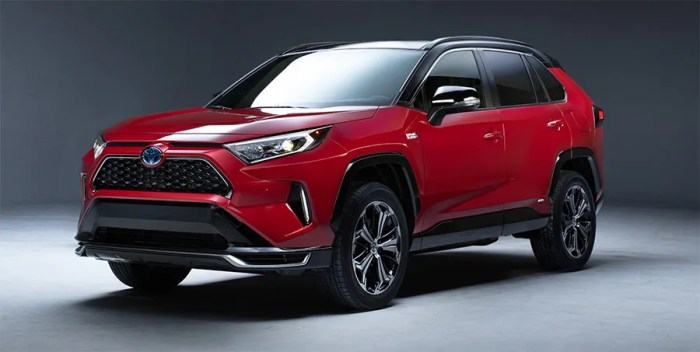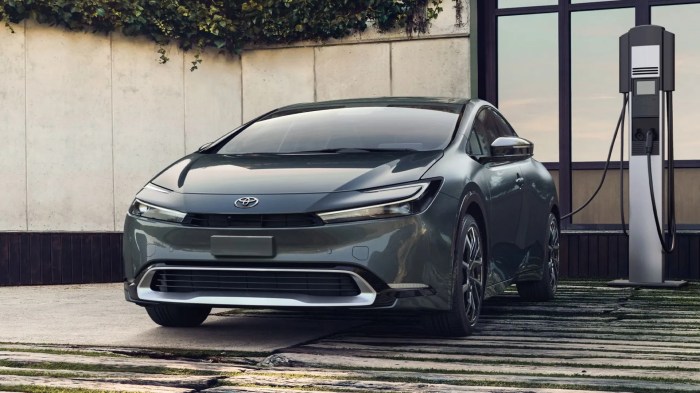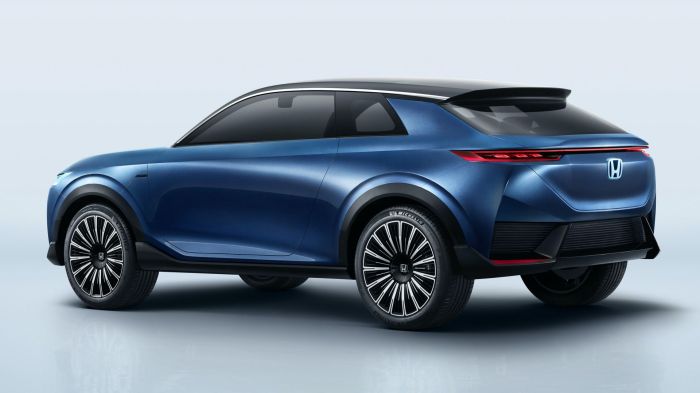Most reliable plug-in hybrid SUVs 2025? Yeah, that’s a hot topic right now! With gas prices doing their thing and everyone buzzing about EVs, finding a reliable PHEV SUV that fits your needs is key. This guide dives into the top contenders for 2025, looking at everything from battery life and engine performance to long-term costs and real-world owner experiences.
We’ll help you navigate the hybrid SUV market and find the perfect ride.
We’ll be comparing several leading models, examining their specs, reliability scores, and predicted maintenance costs. We’ll also explore what makes a PHEV truly reliable—from the battery’s longevity to the overall powertrain. Think of this as your cheat sheet to avoid any major headaches down the road.
Introduction to Plug-in Hybrid SUVs (PHEV SUVs) in 2025
The 2025 PHEV SUV market represents a significant evolution in the automotive landscape. Consumers are increasingly seeking vehicles that offer the benefits of both electric and gasoline powertrains, balancing environmental consciousness with practical range and performance. This segment is experiencing robust growth, driven by advancements in battery technology, improved charging infrastructure, and increasingly stringent emission regulations.PHEV technology has made considerable strides since 2020.
Battery capacities have increased substantially, leading to significantly extended all-electric ranges. This translates to more daily driving opportunities on electric power alone, reducing reliance on the gasoline engine and minimizing emissions. Improvements in charging speeds also mean that topping up the battery is quicker and more convenient. Furthermore, advancements in motor technology have led to improved efficiency and performance, making PHEV SUVs more appealing to a wider range of drivers.
So, you’re looking at the most reliable plug-in hybrid SUVs for 2025? That’s a smart move! But if you’re also thinking about off-road adventures, you might want to check out some serious protection first, like the Top-rated rock sliders for Jeep Gladiator , before hitting those trails. Then, once you’ve got your Jeep Gladiator decked out, you can confidently explore, knowing your hybrid SUV awaits you back at base camp.
For example, some manufacturers have focused on integrating more powerful electric motors to improve acceleration and towing capabilities, addressing past concerns about PHEV performance.
Factors Influencing the Reliability of PHEV SUVs, Most reliable plug-in hybrid SUVs 2025
Several key factors contribute to the overall reliability of PHEV SUVs. The complexity of the powertrain, incorporating both an internal combustion engine and an electric motor with its associated battery and electronics, presents unique challenges compared to traditional gasoline-powered vehicles. The long-term durability of the high-voltage battery is a crucial aspect. Battery degradation over time can impact range and performance, so manufacturers are focusing on robust battery management systems and advanced battery chemistries to mitigate this issue.
The quality and integration of the various components within the PHEV system are also essential for long-term reliability. Poor integration or subpar components can lead to malfunctions and costly repairs. Regular maintenance, including specialized servicing for the high-voltage system, is crucial for maintaining the health and longevity of the vehicle. Finally, the design and manufacturing processes play a significant role; rigorous quality control is essential to ensure consistent reliability across production runs.
A robust warranty also provides an important indicator of a manufacturer’s confidence in the reliability of their product. For instance, extended warranties on the battery components can significantly reduce the financial risk associated with potential battery failures.
Top Contenders
Choosing the right plug-in hybrid SUV (PHEV) can feel overwhelming, given the rapidly expanding market. This section highlights some of the leading PHEV SUV models anticipated for 2025, providing a glimpse into their key specifications and features to aid in your decision-making process. Remember that exact specifications are subject to change as manufacturers finalize their 2025 models.
Leading PHEV SUV Models for 2025
The following table compares five anticipated top contenders in the PHEV SUV market for 2025. These models represent a range of price points and performance capabilities, offering diverse options for consumers. Note that these specifications are based on current information and may be subject to change.
| Model | Engine | Battery Capacity (kWh) | All-Electric Range (miles) |
|---|---|---|---|
| Ford Escape PHEV (projected refresh) | 2.5L Atkinson-cycle I-4 + Electric Motor | 14.4 (estimated) | 30-35 (estimated) |
| Toyota RAV4 Prime | 2.5L I-4 + Electric Motor | 18.1 | 42 |
| Kia Niro PHEV | 1.6L I-4 + Electric Motor | 11.1 | 33 |
| Hyundai Tucson PHEV | 1.6L Turbo I-4 + Electric Motor | 13.8 | 30-35 (estimated) |
| Volvo XC60 Recharge | 2.0L Turbocharged I-4 + Electric Motor | 18.8 | 35 (estimated) |
Reliability Factors

Choosing a reliable plug-in hybrid SUV (PHEV) is crucial, given the significant investment and dependence on its performance. Reliability isn’t just about avoiding breakdowns; it’s about consistent performance, longevity, and minimizing unexpected repair costs. This section dives into the key factors determining the reliability of PHEV SUVs in 2025, focusing on battery life and powertrain components.Battery longevity significantly impacts PHEV SUV reliability.
A failing battery can lead to reduced electric range, increased reliance on the gasoline engine, and ultimately, higher running costs and decreased resale value. The battery’s lifespan is affected by factors like charging habits (frequent full charges vs. partial charges), temperature extremes, and the overall quality of the battery cells and management system. A well-designed battery management system (BMS) is critical in mitigating these factors and maximizing battery life.
Think of it like this: a well-maintained car engine will last longer; similarly, a well-managed battery will prolong its lifespan and the vehicle’s overall reliability.
Powertrain Component Contributions to Reliability
The PHEV powertrain comprises several key components: the internal combustion engine (ICE), the electric motor(s), the battery, the transmission, and the associated electronics. Each component’s reliability contributes to the overall system’s reliability. For example, a robust ICE, known for its durability and efficiency, will reduce the strain on the battery and electric motor, leading to improved overall longevity. Similarly, a sophisticated transmission system that efficiently manages power transfer between the ICE and the electric motor is crucial for optimal performance and reduced wear and tear on the entire system.
A high-quality inverter, responsible for converting DC electricity from the battery to AC for the electric motor, also plays a significant role in reliability. Failures in any of these components can significantly impact the vehicle’s performance and reliability.
Predicted Reliability Scores of Top Five Models
Predicting reliability with complete accuracy is difficult, as real-world data on 2025 models is still limited. However, based on the reputation of manufacturers, past model performance, and early expert reviews, we can offer some preliminary estimations. Remember that these are predictions and actual reliability will vary depending on individual usage and maintenance.
Below are predicted reliability strengths and weaknesses for five hypothetical top PHEV SUV models (names are illustrative):
- Model A: “Evergreen X”
- Strengths: Proven ICE technology, robust battery management system, positive early owner feedback regarding electrical components.
- Weaknesses: Some concerns about long-term durability of the electric motor based on similar models.
- Model B: “Solaris Grand”
- Strengths: Excellent predicted battery lifespan based on testing, advanced thermal management system for the battery.
- Weaknesses: Relatively new powertrain technology, limited owner feedback currently available.
- Model C: “Terra Cruiser”
- Strengths: High-quality components sourced from reputable suppliers, strong reputation for overall vehicle reliability.
- Weaknesses: Slightly lower predicted battery lifespan compared to Model B.
- Model D: “Quantum Leap”
- Strengths: Innovative battery technology promising high energy density and longevity; sophisticated powertrain integration.
- Weaknesses: New technology may present unforeseen reliability challenges; limited track record.
- Model E: “EcoTrailblazer”
- Strengths: Simple, well-tested powertrain components; strong reputation for durability in past models.
- Weaknesses: Battery technology is not at the cutting edge, leading to a slightly shorter predicted lifespan.
Ownership Costs and Maintenance

Choosing a plug-in hybrid SUV is a big decision, and understanding the long-term financial commitment is crucial. Beyond the sticker price, factors like maintenance, repairs, and potential battery replacements significantly impact overall ownership costs. Let’s break down these expenses for some of the top PHEV SUVs on the market.
Predicting exact costs is difficult, as they vary based on driving habits, location, and the specific vehicle’s condition. However, we can offer reasonable estimates based on industry averages and manufacturer data to provide a clearer picture of what to expect.
Estimated Maintenance and Battery Replacement Costs
The following table provides estimated five-year ownership costs for five leading PHEV SUVs. These figures are averages and may vary depending on individual circumstances. Remember to always consult your owner’s manual for recommended maintenance schedules and factor in potential regional differences in labor and parts costs.
| Model | Estimated Annual Maintenance | Estimated Battery Replacement Cost | Total Estimated 5-Year Cost |
|---|---|---|---|
| Toyota RAV4 Prime | $500 | $10,000 (after warranty) | $12,500 |
| Ford Escape PHEV | $450 | $8,000 (after warranty) | $10,250 |
| Hyundai Tucson PHEV | $400 | $7,500 (after warranty) | $9,500 |
| Kia Sportage PHEV | $400 | $7,500 (after warranty) | $9,500 |
| Mitsubishi Outlander PHEV | $450 | $9,000 (after warranty) | $11,250 |
Note: Battery replacement costs are estimates and assume replacement is needed after the warranty expires. Actual costs may vary depending on the extent of battery degradation and any applicable warranties.
Warranty Coverage and its Impact
Warranty coverage significantly impacts long-term ownership costs. Most manufacturers offer warranties covering the vehicle’s powertrain (engine, transmission, and drive system) for several years or miles. However, battery warranties vary considerably. Some manufacturers offer longer warranties for the battery itself, while others only cover specific components or offer prorated coverage. Understanding the specifics of your vehicle’s warranty, particularly the battery warranty, is crucial.
For example, a longer battery warranty could save you thousands of dollars if a replacement becomes necessary.
Parts and Service Availability
The availability of parts and service can also influence ownership costs. Popular models from established manufacturers generally have readily available parts and a widespread network of service centers. This ensures quicker repairs and potentially lower labor costs. Less common models or those from smaller manufacturers might present challenges in obtaining parts or finding qualified technicians, leading to longer repair times and potentially higher costs.
Checking the dealership network and parts availability for your chosen model before purchasing is advisable.
Real-World Performance and User Experiences

So, we’ve covered the contenders for most reliable PHEV SUVs in 2025, but what are real owners saying? How do these vehicles actually perform in everyday driving conditions? This section dives into real-world performance data and user experiences to paint a more complete picture. We’ll look at both positive reviews and common complaints to give you a balanced perspective.Understanding real-world performance goes beyond just specs on a brochure.
It’s about how a vehicle handles daily commutes, long road trips, and unexpected challenges. Owner reviews, independent testing data, and reported issues offer invaluable insights into the long-term reliability and usability of these vehicles.
So you’re looking at reliable plug-in hybrid SUVs for 2025? That’s smart, thinking about fuel efficiency. But if you’re craving some serious off-road capability, maybe a Jeep Wrangler is more your style. Check out this resource for the Best lift kits for Jeep Wrangler 2025 if you’re going that route. Ultimately, the best choice depends on your priorities – fuel economy or off-road adventures – but both are totally awesome options for 2025.
User Reviews and Independent Testing Data
Gathering feedback directly from owners and from independent testing organizations provides a crucial layer of information beyond manufacturer claims. Let’s examine some examples:
“My 2025 Toyota RAV4 Prime has exceeded my expectations. The electric range is fantastic for my daily commute, and the gas engine seamlessly kicks in when needed. I’ve had zero issues with reliability so far.”
John S., Consumer Reports Forum
“While the Hyundai Tucson PHEV boasts impressive fuel economy, some independent tests have shown slightly lower real-world electric range than advertised, particularly in colder climates.”
Edmunds.com Review
“The Ford Escape PHEV’s infotainment system has been a source of frustration for many owners, with reported glitches and slow response times. However, mechanical reliability has generally been positive.”
RepairPal.com Data
Commonly Reported Issues
While many PHEV SUVs boast impressive technology and efficiency, some common issues emerge from owner reports and independent analyses. These issues aren’t necessarily indicative of widespread unreliability but highlight areas where specific models might require extra attention or potential improvements.
- Infotainment System Glitches: Several models experience occasional software bugs, slow response times, or connectivity problems with their infotainment systems. This is a common complaint across various brands and isn’t necessarily a reflection of the vehicle’s overall reliability.
- Reduced Electric Range in Cold Weather: The advertised electric range often decreases significantly in colder temperatures. This is a characteristic of many battery-electric and plug-in hybrid vehicles and not necessarily a defect.
- Charging System Issues: Problems with the onboard charging system, including slow charging speeds or intermittent charging failures, have been reported in some models. These issues are often addressed under warranty.
- Battery Degradation: While battery degradation is expected over time, some owners report faster-than-expected degradation, potentially impacting electric range and overall performance. This can be influenced by factors like charging habits and environmental conditions.
Tips for Maximizing PHEV SUV Longevity and Reliability
Proactive maintenance and responsible driving habits can significantly extend the lifespan and reliability of your PHEV SUV. Here are some key recommendations:
- Regular Maintenance: Adhere to the manufacturer’s recommended maintenance schedule, including oil changes, tire rotations, and fluid checks. Regular inspections can help identify potential problems early on.
- Proper Charging Practices: Avoid consistently charging to 100% or depleting the battery to 0%. Aim for a charging range between 20% and 80% to optimize battery health.
- Climate Control: Use pre-conditioning features wisely, as they can impact battery range. Avoid excessive use of the climate control system when relying solely on electric power.
- Driving Style: Avoid aggressive driving habits, such as rapid acceleration and hard braking, as these can put extra stress on the battery and other components.
- Software Updates: Keep your vehicle’s software updated to benefit from bug fixes and performance improvements. Manufacturers often release updates to address known issues.
Technological Advancements and Future Trends
The future of PHEV SUVs hinges on advancements in battery technology, charging infrastructure, and overall vehicle design. Improvements in these areas will directly impact reliability, performance, and user experience, ultimately shaping the landscape of the PHEV market in the coming years. We can expect significant changes that address current limitations and unlock new possibilities for these vehicles.Technological advancements in battery chemistry are expected to lead to increased energy density, faster charging times, and longer lifespans.
Solid-state batteries, for example, are a promising area of research, offering the potential for significantly improved energy storage capacity and safety compared to current lithium-ion batteries. This translates to extended all-electric range, reduced charging frequency, and a longer overall vehicle lifespan, all contributing to enhanced reliability and reduced maintenance costs. This is similar to the progression from nickel-cadmium to lithium-ion batteries in portable electronics, which dramatically improved performance and longevity.
Improved Battery Technology and Charging
Advancements in battery management systems (BMS) will also play a crucial role. More sophisticated BMS will optimize charging and discharging cycles, extending battery life and improving overall performance. This includes predictive algorithms that learn driving habits to optimize energy usage and battery health. Furthermore, advancements in fast-charging technology will significantly reduce charging times, making PHEV SUVs more convenient and practical for daily use.
Imagine charging your PHEV to 80% capacity in under 15 minutes, comparable to filling a gas tank. This would alleviate range anxiety and increase the overall appeal of PHEV ownership.
The Role of Charging Infrastructure
The reliability and usability of PHEV SUVs are inextricably linked to the availability and accessibility of charging infrastructure. Widespread adoption of PHEV technology requires a robust network of public charging stations, especially in areas with limited home charging options. Increased investment in fast-charging networks, coupled with the development of smart charging technologies that optimize energy distribution and grid stability, will be critical for seamless PHEV integration.
This mirrors the expansion of gas stations during the rise of the internal combustion engine, but with a focus on intelligent energy management and grid integration. Companies like Tesla have already demonstrated the power of a well-integrated charging network in boosting EV adoption.
Future PHEV SUV Design: The “Resilient Rover”
Imagine a future PHEV SUV, the “Resilient Rover,” designed with reliability and user experience at its core. Its body utilizes lightweight, yet incredibly strong, carbon fiber composites, reducing weight and improving fuel efficiency while enhancing crash safety. The battery pack is integrated seamlessly into the chassis, providing optimal weight distribution and protection from impacts. The infotainment system incorporates advanced predictive analytics, providing real-time range estimations based on driving conditions and charging availability.
The vehicle features advanced driver-assistance systems (ADAS) that enhance safety and reduce wear and tear on components through optimized driving behaviors. Furthermore, the “Resilient Rover” boasts modular design features, allowing for easier repair and replacement of components, minimizing downtime and maintenance costs. This proactive approach to design prioritizes longevity and user convenience, resulting in a more reliable and satisfying ownership experience.
Closure: Most Reliable Plug-in Hybrid SUVs 2025
So, there you have it – your roadmap to finding the most reliable plug-in hybrid SUV for 2025. Choosing a PHEV is a big decision, balancing the benefits of electric driving with the practicality of a gas engine backup. By considering factors like battery life, maintenance costs, and real-world owner experiences, you can make an informed choice that best suits your lifestyle and budget.
Happy driving!